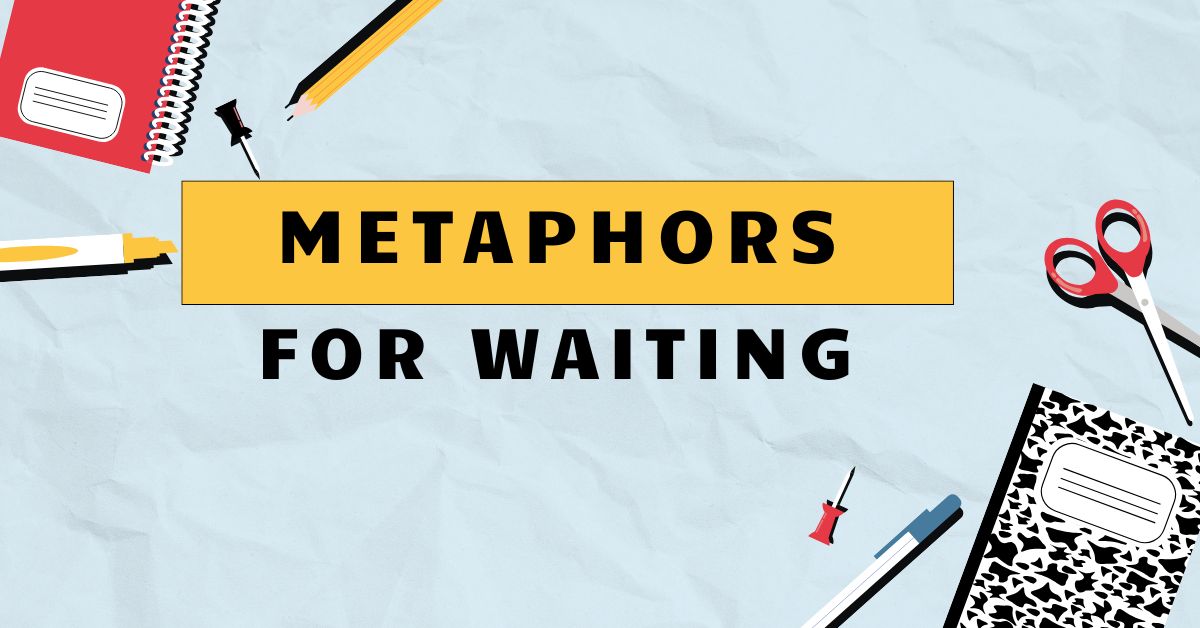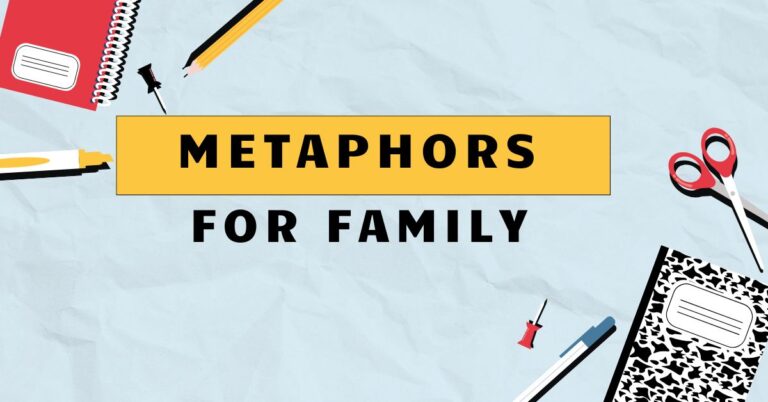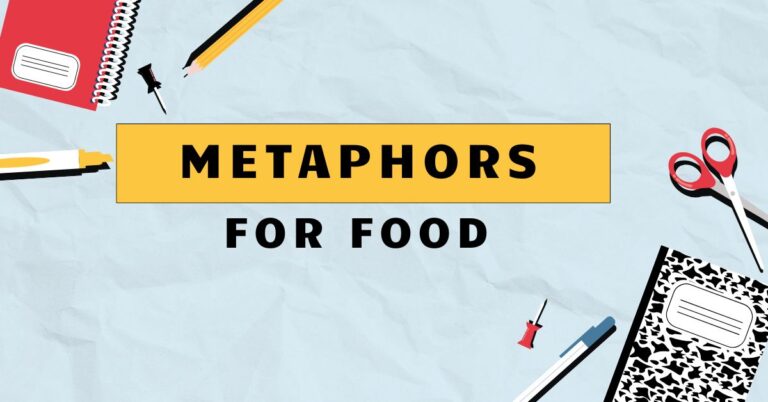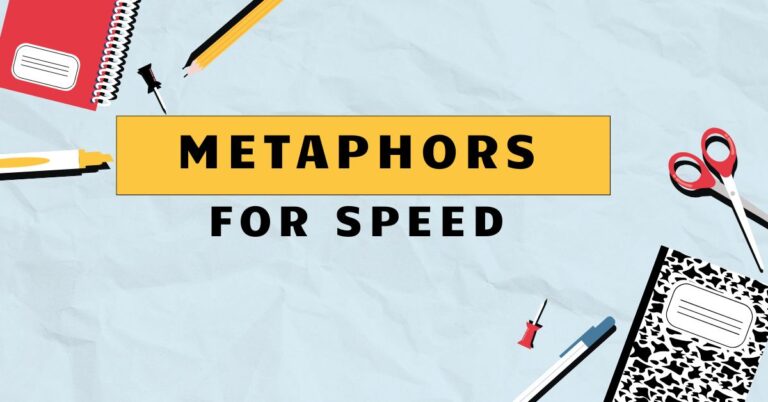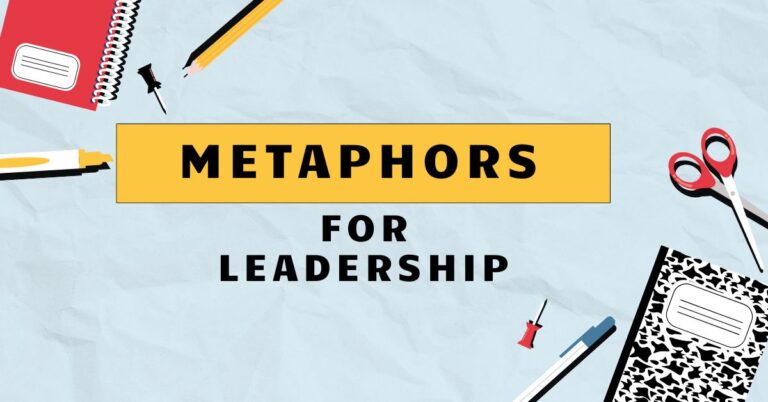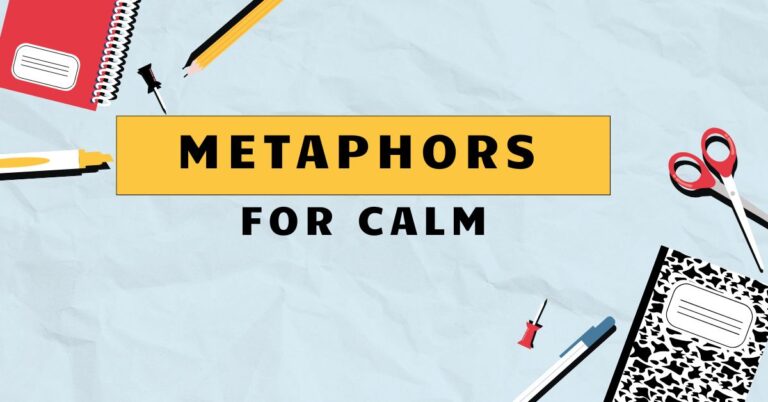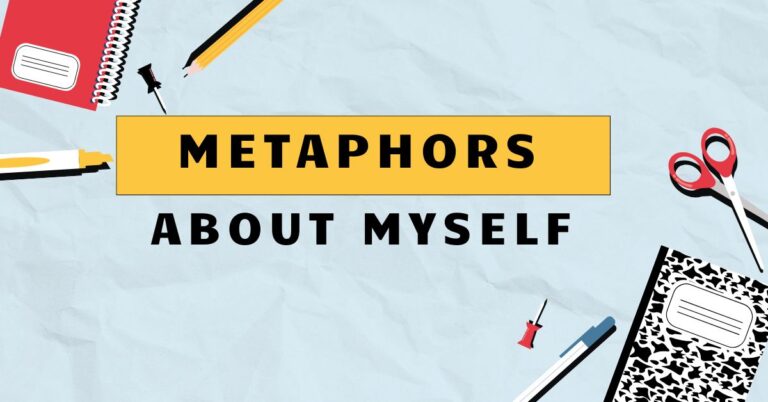35 Metaphors for Waiting: Understanding Figurative Language
Waiting is an inherent part of life, and the English language offers a rich tapestry of metaphors to describe this universal experience. Understanding these metaphors not only enhances comprehension but also adds depth and color to your communication.
This article explores the various metaphors used to describe waiting, their structural components, and how to use them effectively. This guide is suitable for English language learners, writers, and anyone interested in expanding their understanding of figurative language.
Whether you’re studying for an English exam, writing creatively, or simply looking to improve your everyday communication, mastering metaphors for waiting will undoubtedly enrich your linguistic toolkit.
Table of Contents
- Introduction
- Definition of Metaphor for Waiting
- Structural Breakdown of Waiting Metaphors
- Types and Categories of Waiting Metaphors
- Examples of Metaphors for Waiting
- Usage Rules for Metaphors of Waiting
- Common Mistakes When Using Waiting Metaphors
- Practice Exercises
- Advanced Topics in Waiting Metaphors
- Frequently Asked Questions (FAQ)
- Conclusion
Introduction
The concept of waiting is frequently expressed through metaphors, adding layers of meaning and emotional resonance to our language. These metaphors transform the abstract experience of waiting into something more tangible and relatable.
By understanding how these metaphors work, you can enhance your ability to communicate effectively and appreciate the nuances of the English language.
This article delves into the world of metaphors for waiting, providing a comprehensive guide to their definition, structure, types, usage, and common pitfalls. Through numerous examples and practical exercises, you’ll gain the knowledge and skills to confidently use and interpret these metaphors in various contexts.
Whether you are a student, writer, or language enthusiast, this resource will help you unlock the power of figurative language.
Definition of Metaphor for Waiting
A metaphor for waiting is a figure of speech that describes the act or experience of waiting by comparing it to something else, without using “like” or “as.” It transfers qualities or characteristics from one thing to another to create a more vivid and relatable image or feeling. These metaphors go beyond literal descriptions, offering deeper insights into the emotional, temporal, or physical aspects of waiting.
Metaphors are crucial in language because they allow us to articulate abstract concepts in more concrete terms. In the context of waiting, metaphors can help express the frustration, anticipation, boredom, or hope associated with the experience.
They add color and depth to our communication, making it more engaging and impactful. Understanding metaphors for waiting enhances both comprehension and expression.
The function of a metaphor for waiting extends beyond mere description. It evokes emotions, creates connections, and provides a unique perspective on the experience of waiting.
For example, saying “waiting is a slow burn” suggests a gradual, agonizing process, while “waiting is a fertile ground for ideas” implies a period of productive contemplation. The context in which these metaphors are used significantly influences their interpretation and impact.
Structural Breakdown of Waiting Metaphors
Understanding the structure of metaphors for waiting involves recognizing the key elements that make them effective. A typical metaphor consists of two main components: thetenor(the subject being described, in this case, waiting) and thevehicle(the object or concept to which waiting is being compared).
The connection between the tenor and the vehicle creates the metaphorical meaning.
The effectiveness of a metaphor depends on the strength of the association between the tenor and the vehicle. A well-chosen vehicle can illuminate aspects of waiting that might otherwise remain unexpressed.
For instance, if waiting is the tenor and a “marathon” is the vehicle, the metaphor suggests endurance, perseverance, and a long, challenging process. The shared characteristics between waiting and a marathon (e.g., time, effort, mental fortitude) create a meaningful connection.
Thegroundof the metaphor refers to the shared characteristics or similarities between the tenor and the vehicle. Identifying the ground is essential for interpreting the metaphor accurately.
In the example above, the ground includes the length of time, the need for patience, and the potential for challenges or setbacks. Recognizing the ground helps to understand the intended meaning and emotional impact of the metaphor.
The interplay between tenor, vehicle, and ground creates the overall metaphorical meaning.
Types and Categories of Waiting Metaphors
Metaphors for waiting can be categorized based on the aspects of waiting they emphasize. Common categories include temporal, physical, emotional, and environmental metaphors.
Each category provides a different lens through which to understand the experience of waiting.
Temporal Metaphors
Temporal metaphors describe waiting in terms of time and its characteristics. These metaphors often convey the duration, pace, or quality of time spent waiting.
They can express the feeling that time is passing slowly, quickly, or in a particular way. Temporal metaphors are particularly useful for emphasizing the length and perceived speed of waiting.
Examples of temporal metaphors include “time crawls,” “waiting is an eternity,” and “time stands still.” These metaphors highlight the subjective experience of time during periods of waiting. They can evoke feelings of impatience, boredom, or anticipation, depending on the context and the specific metaphor used.
Physical Metaphors
Physical metaphors describe waiting by comparing it to physical sensations, actions, or states. These metaphors often relate to feelings of confinement, restriction, or physical discomfort.
They can also suggest movement, stagnation, or the build-up of pressure. Physical metaphors make the abstract experience of waiting more tangible and relatable.
Examples of physical metaphors include “waiting is a heavy burden,” “being stuck in limbo,” and “holding your breath.” These metaphors convey the physical and psychological strain of waiting. They can evoke feelings of frustration, helplessness, or anticipation, depending on the specific metaphor and the context in which it is used.
Emotional Metaphors
Emotional metaphors describe waiting in terms of feelings and emotional states. These metaphors often express the emotional impact of waiting, such as anxiety, hope, frustration, or despair.
They capture the subjective emotional experience of waiting and make it more relatable.
Examples of emotional metaphors include “waiting is a rollercoaster of emotions,” “a simmering anticipation,” and “a gnawing anxiety.” These metaphors highlight the emotional turmoil that can accompany waiting. They can evoke empathy and understanding, making the experience of waiting more vivid and impactful for the listener or reader.
Environmental Metaphors
Environmental metaphors describe waiting by comparing it to aspects of the natural world or specific environments. These metaphors can suggest growth, decay, stagnation, or transformation.
They provide a broader, more symbolic perspective on the experience of waiting, often linking it to natural cycles or processes.
Examples of environmental metaphors include “waiting is a barren desert,” “a seed planted in anticipation,” and “the calm before the storm.” These metaphors connect waiting to larger natural phenomena, adding depth and resonance to the experience. They can evoke feelings of hope, despair, or anticipation, depending on the specific metaphor and its context.
Examples of Metaphors for Waiting
Below are examples of metaphors for waiting, categorized by type. Each category includes a table with specific examples and their interpretations.
These examples illustrate the diverse ways in which metaphors can be used to describe the experience of waiting.
Temporal Metaphor Examples
Temporal metaphors emphasize the duration, pace, or quality of time spent waiting. These metaphors often convey the feeling that time is passing slowly, quickly, or in a particular way.
The table below provides several examples of temporal metaphors for waiting.
| Metaphor | Interpretation |
|---|---|
| Waiting is an eternity. | The waiting feels extremely long and never-ending. |
| Time crawls when you’re waiting. | Time passes very slowly during the waiting period. |
| Waiting is a timeless void. | The waiting feels disconnected from the normal flow of time. |
| The clock ticks with agonizing slowness. | Each moment feels prolonged and painful. |
| Waiting feels like a year. | The duration of the waiting period is perceived as very long. |
| Time stands still in anticipation. | The normal passage of time seems to halt due to excitement or anxiety. |
| Waiting stretches into infinity. | The waiting seems endless and without any foreseeable end. |
| The seconds drag on forever. | Each second feels incredibly long and drawn out. |
| Waiting is a prolonged now. | The present moment of waiting feels extended and significant. |
| Time is a snail when waiting. | Time moves at an extremely slow pace during the waiting period. |
| Each minute is a mountain. | Every minute that passes feels like a significant challenge to overcome. |
| The wait is a drawn-out sigh. | The period of waiting feels extended and filled with a sense of weariness. |
| Waiting is a suspended moment. | The experience of waiting feels like being caught in a frozen point in time. |
| Time stretches like taffy. | The perception of time becomes elongated and distorted during the wait. |
| Waiting is a temporal labyrinth. | The experience of waiting feels complex, confusing, and never-ending. |
| The wait echoes through time. | The impact and feeling of waiting resonate long after the event has passed. |
| Waiting is a slow drip of time. | Time passes little by little, like a slow and steady drip of water. |
| The wait is a time warp. | The experience of waiting distorts the normal perception of time. |
| Waiting is a chronal echo. | The feeling of waiting reverberates and repeats itself in one’s mind. |
| The wait is an age. | The duration of the waiting period feels incredibly long and significant. |
| Waiting is a temporal prison. | The feeling of being trapped within the confines of time while waiting. |
| Time is a glacier during the wait. | Time moves at an extremely slow and almost imperceptible pace. |
| Each hour is an epoch. | Every hour spent waiting feels like a distinct and significant period of time. |
| Waiting is a temporal quicksand. | The feeling of being stuck and unable to move forward in time during the wait. |
| The wait is a stretched-out timeline. | The perception of time becomes elongated and extended during the waiting period. |
Physical Metaphor Examples
Physical metaphors describe waiting by comparing it to physical sensations, actions, or states. These metaphors often relate to feelings of confinement, restriction, or physical discomfort.
The table below provides several examples of physical metaphors for waiting.
| Metaphor | Interpretation |
|---|---|
| Waiting is a heavy burden. | The act of waiting feels burdensome and difficult to bear. |
| Being stuck in limbo. | Feeling trapped in an uncertain state, unable to move forward. |
| Holding your breath in anticipation. | Suppressing emotions and physical reactions while eagerly awaiting something. |
| Waiting is like being in quicksand. | Feeling trapped and unable to escape the waiting period. |
| The wait is a tightrope walk. | The experience feels precarious and requires careful balance. |
| Waiting is a locked room. | Feeling confined and unable to escape the situation. |
| The anticipation is a clenched fist. | The feeling of anticipation is intense and tightly controlled. |
| Waiting is a pressure cooker. | The tension and anticipation build up to an unbearable level. |
| The wait is a stone in your shoe. | The experience is persistently irritating and uncomfortable. |
| Waiting is a tight corset. | Feeling constricted and unable to breathe freely. |
| Anticipation is a coiled spring. | The feeling of anticipation is tense and ready to be released. |
| The wait is a lead weight. | The experience feels heavy and burdensome, weighing one down. |
| Waiting is a maze. | Feeling lost and confused while navigating the waiting period. |
| The anticipation is a knot in your stomach. | The feeling of anticipation causes physical discomfort and anxiety. |
| Waiting is a cage. | Feeling trapped and confined, unable to move freely. |
| The wait is a long shadow. | The experience casts a dark and lingering presence. |
| Waiting is a still pond. | Feeling stagnant and lacking movement or progress. |
| The anticipation is a drawn bow. | The feeling of anticipation is tense and ready to be unleashed. |
| Waiting is a tightrope. | The experience requires careful balance and precision. |
| The wait is a brick wall. | Feeling blocked and unable to move forward due to the waiting period. |
| Waiting is a vise grip. | Feeling tightly held and unable to escape the situation. |
| Anticipation is a clenched jaw. | The feeling of anticipation creates physical tension and stress. |
| The wait is a drawn sword. | The experience feels threatening and full of potential danger. |
| Waiting is a locked box. | Feeling confined and unable to access what one desires. |
| The anticipation is a held breath. | Suppressing emotions and physical reactions while eagerly awaiting something. |
Emotional Metaphor Examples
Emotional metaphors describe waiting in terms of feelings and emotional states. These metaphors often express the emotional impact of waiting, such as anxiety, hope, frustration, or despair.
The table below provides several examples of emotional metaphors for waiting.
| Metaphor | Interpretation |
|---|---|
| Waiting is a rollercoaster of emotions. | The experience involves a series of intense and fluctuating feelings. |
| A simmering anticipation. | A feeling of excitement and eagerness that is slowly building. |
| A gnawing anxiety. | A persistent and troubling feeling of worry and unease. |
| Waiting is a sea of uncertainty. | Feeling lost and unsure of what the future holds. |
| The wait is a storm of emotions. | The experience involves a tumultuous and overwhelming range of feelings. |
| Waiting is a desert of despair. | Feeling emotionally barren and hopeless. |
| Anticipation is a fragile hope. | The feeling of anticipation is delicate and easily broken. |
| The wait is a symphony of longing. | The experience is filled with a deep and resonant sense of yearning. |
| Waiting is a battlefield of patience. | The act of waiting requires constant effort and control over one’s emotions. |
| The wait is a volcano of frustration. | The feeling of frustration is building up to an explosive level. |
| Waiting is a river of hope. | A continuous flow of optimism and positive expectation. |
| The wait is a labyrinth of despair. | The experience feels complex and confusing, leading to feelings of hopelessness. |
| Anticipation is a flickering candle. | The feeling of anticipation is fragile and easily extinguished. |
| The wait is an ocean of emotions. | The experience is vast and overwhelming in its emotional intensity. |
| Waiting is a prison of anxiety. | Feeling trapped and confined by one’s own worries and fears. |
| The wait is a garden of dreams. | The experience is filled with hopes and aspirations for the future. |
| Anticipation is a silent scream. | The feeling of anticipation is intense and overwhelming, yet suppressed. |
| The wait is a kaleidoscope of feelings. | The experience is a constantly changing and vibrant mix of emotions. |
| Waiting is a tightrope of hope. | The act of waiting requires careful balance and maintaining optimism. |
| The wait is a tempest of longing. | The experience is filled with a turbulent and intense sense of yearning. |
| Waiting is a cage of fear. | Feeling trapped and confined by one’s own anxieties and apprehensions. |
| The wait is a dance of anticipation. | The experience is filled with a delicate and rhythmic sense of excitement. |
| Anticipation is a veiled promise. | The feeling of anticipation holds a hidden or uncertain potential. |
| The wait is a tapestry of emotions. | The experience is intricately woven with a variety of different feelings. |
| Waiting is a spiral of doubt. | Feeling trapped in a cycle of uncertainty and questioning. |
Environmental Metaphor Examples
Environmental metaphors describe waiting by comparing it to aspects of the natural world or specific environments. These metaphors can suggest growth, decay, stagnation, or transformation.
The table below provides several examples of environmental metaphors for waiting.
| Metaphor | Interpretation |
|---|---|
| Waiting is a barren desert. | The experience feels empty and devoid of any positive outcomes. |
| A seed planted in anticipation. | The waiting period is seen as a time for potential growth and development. |
| The calm before the storm. | A period of quiet and stillness before a significant event or change. |
| Waiting is a dormant volcano. | A state of suppressed energy and potential for explosive release. |
| The wait is a long winter. | A period of hardship and inactivity before a time of renewal. |
| Waiting is a still lake. | A state of tranquility and reflection before a disturbance. |
| Anticipation is a budding flower. | The feeling of anticipation is seen as something beautiful and promising. |
| The wait is a dense fog. | A state of uncertainty and lack of clarity about the future. |
| Waiting is a dark forest. | A state of confusion and potential danger before reaching a clearing. |
| The wait is a rising tide. | A gradual increase in intensity and anticipation. |
| Waiting is a parched land. | A state of longing and need for something essential. |
| The wait is a hidden spring. | A source of potential and renewal that is yet to be discovered. |
| Anticipation is a gathering storm. | The feeling of anticipation is building up to an intense climax. |
| The wait is a winding river. | A journey filled with twists and turns before reaching the destination. |
| Waiting is a vast ocean. | A state of endless possibilities and unknown depths. |
| The wait is a fertile field. | A time of potential growth and abundance. |
| Anticipation is a morning dawn. | The feeling of anticipation is seen as a new beginning and fresh start. |
| The wait is a silent forest. | A state of quiet and stillness before a sudden awakening. |
| Waiting is a deep cave. | A state of introspection and hidden potential. |
| The wait is a barren landscape. | A period of emptiness and lack of fulfillment. |
| Waiting is a frozen tundra. | A state of stagnation and lack of progress. |
| The wait is a blossoming garden. | A time of growth, beauty, and fulfillment. |
| Anticipation is a summer breeze. | The feeling of anticipation is light, refreshing, and promising. |
| The wait is a starlit sky. | A state of wonder, mystery, and endless possibilities. |
| Waiting is a dormant volcano. | A state of suppressed energy and potential for explosive release. |
Usage Rules for Metaphors of Waiting
When using metaphors for waiting, it’s crucial to ensure clarity and relevance. The chosen metaphor should resonate with the intended audience and accurately reflect the specific nuances of the waiting experience.
Avoid using clichéd or overused metaphors, as they can lack impact and originality. Consider the context and the overall tone of your communication when selecting a metaphor.
Consistency is another important factor. Once you’ve established a metaphor, maintain it throughout your writing or conversation.
Mixing metaphors can create confusion and weaken the overall effect. Ensure that the tenor and vehicle are logically connected and that the ground of the metaphor is clear to the audience.
The metaphor should enhance understanding, not obscure it.
Be mindful of cultural differences and sensitivities. Some metaphors may not translate well across different cultures or may have unintended connotations.
Always consider your audience and adapt your language accordingly. A metaphor that works in one context may be inappropriate or confusing in another.
Cultural awareness is essential for effective communication.
Common Mistakes When Using Waiting Metaphors
One common mistake is using mixed metaphors, where incompatible images are combined, creating confusion. For example, saying “Waiting is a slow burn, but it’s also a rollercoaster” mixes two different types of experiences that don’t logically fit together.
Another mistake is using clichés or overused metaphors. Phrases like “waiting is a necessary evil” have lost their impact due to overuse.
Strive for originality and creativity in your choice of metaphors. The more unique and fitting the metaphor, the more effective it will be.
Misunderstanding the ground of the metaphor can also lead to miscommunication. If the shared characteristics between the tenor and vehicle are unclear or irrelevant, the metaphor will fail to convey the intended meaning.
Ensure that the audience can easily identify the connection between waiting and the chosen vehicle.
| Incorrect | Correct | Explanation |
|---|---|---|
| Waiting is a slow burn, but it’s also a rollercoaster. | Waiting is a slow burn. | Avoid mixing incompatible metaphors. |
| Waiting is a necessary evil. | Waiting is a test of patience. | Use original and impactful metaphors, not clichés. |
| Waiting is a fish out of water. | Waiting is like being a fish out of water. | Ensure the ground of the metaphor is clear and relevant. This example is more simile than metaphor. |
Practice Exercises
Test your understanding of metaphors for waiting with the following exercises. Identify the type of metaphor used in each sentence and explain its meaning.
Then, create your own metaphors for waiting based on the given prompts.
Exercise 1: Identify the type of metaphor
| Question | Answer |
|---|---|
| 1. Waiting is a desert of despair. | Emotional metaphor: Waiting feels emotionally barren and hopeless. |
| 2. Time crawls when you’re waiting. | Temporal metaphor: Time passes very slowly during the waiting period. |
| 3. Waiting is a heavy burden. | Physical metaphor: The act of waiting feels burdensome and difficult to bear. |
| 4. Waiting is a dormant volcano. | Environmental metaphor: A state of suppressed energy and potential for explosive release. |
| 5. The anticipation is a clenched fist. | Physical metaphor: The feeling of anticipation is intense and tightly controlled. |
| 6. Waiting is a river of hope. | Emotional metaphor: A continuous flow of optimism and positive expectation. |
| 7. Waiting stretches into infinity. | Temporal metaphor: The waiting seems endless and without any foreseeable end. |
| 8. Waiting is like being in quicksand. | Physical metaphor: Feeling trapped and unable to escape the waiting period. |
| 9. The wait is a storm of emotions. | Emotional metaphor: The experience involves a tumultuous and overwhelming range of feelings. |
| 10. Waiting is a barren desert. | Environmental metaphor: The experience feels empty and devoid of any positive outcomes. |
Exercise 2: Create your own metaphors
| Prompt | Example Answer |
|---|---|
| 1. Describe waiting for exam results. | Waiting for exam results is a tightrope walk over a chasm of uncertainty. |
| 2. Describe waiting for a loved one to return. | Waiting for a loved one to return is a silent vigil, watching for the first light of dawn. |
| 3. Describe waiting for a job offer. | Waiting for a job offer is a prolonged chess game, each move a calculated risk. |
| 4. Describe waiting for a medical diagnosis. | Waiting for a medical diagnosis is a dark cloud hanging over a sunny day. |
| 5. Describe waiting for a flight delay to end. | Waiting for a flight delay to end is a temporal prison, each minute an agonizing eternity. |
| 6. Describe waiting for inspiration to strike. | Waiting for inspiration to strike is like waiting for rain in a drought-stricken land. |
| 7. Describe waiting for a new season to begin. | Waiting for a new season to begin is like holding your breath before diving into cool water. |
| 8. Describe waiting for a package to arrive. | Waiting for a package to arrive is a simmering anticipation, ready to boil over with excitement. |
| 9. Describe waiting for a phone call. | Waiting for a phone call is like being tethered to a silent bell, listening for its faint chime. |
| 10. Describe waiting for an apology. | Waiting for an apology is a desert of regret, parched for the rain of forgiveness. |
Advanced Topics in Waiting Metaphors
For advanced learners, exploring the use of extended metaphors and mixed metaphors in literature can provide deeper insights into the art of figurative language. Extended metaphors involve developing a single metaphor throughout a longer passage or entire work, creating a sustained and complex comparison.
Analyzing how authors use these metaphors can enhance your understanding of literary techniques and thematic development. Exploring the subtle nuances of metaphors in different literary genres reveals intricate layers of meaning.
Additionally, studying the historical and cultural context of waiting metaphors can offer a broader perspective on their significance. Metaphors evolve over time and vary across cultures, reflecting different societal values and beliefs.
Understanding these variations can enrich your interpretation of literary works and improve your cross-cultural communication skills. Examining how different cultures perceive and express waiting can be enlightening.
Finally, experimenting with creating your own original and innovative metaphors for waiting can enhance your creative writing skills. Challenge yourself to break away from clichés and develop unique comparisons that capture the essence of the waiting experience.
Consider the emotional, temporal, and physical aspects of waiting and explore different vehicles to convey these nuances. Creative writing workshops can provide a supportive environment to experiment with metaphor creation.
Frequently Asked Questions (FAQ)
Here are some frequently asked questions about metaphors for waiting, along with detailed answers to help clarify any confusion.
- What is the difference between a metaphor and a simile?
A metaphor directly compares two unlike things without using “like” or “as,” while a simile uses “like” or “as” to make the comparison. For example, “Waiting is an eternity” is a metaphor, whereas “Waiting is like an eternity” is a simile. Similes are generally less forceful and direct than metaphors.
- Why are metaphors important in language?
Metaphors allow us to understand abstract concepts in more concrete terms, making communication more vivid and engaging. They add depth and emotional resonance to our language, enhancing both comprehension and expression. Metaphors also facilitate creative thinking and problem-solving.
- How can I identify a metaphor in a sentence?
Look for a statement that equates two unlike things without using “like” or “as.” If the statement is not literally true, it is likely a metaphor. Consider the context and the intended meaning to determine if the statement is metaphorical.
- What are some common categories of metaphors for waiting?
Common categories include temporal metaphors (related to time), physical metaphors (related to physical sensations), emotional metaphors (related to feelings), and environmental metaphors (related to the natural world). Each category provides a different perspective on the experience of waiting.
- How can I avoid using clichéd metaphors?
Strive for originality and creativity in your choice of metaphors. Think about the specific nuances of the waiting experience and explore different vehicles to convey these nuances. Read widely and pay attention to how other writers use metaphors effectively. Brainstorming and freewriting can help generate fresh ideas.
- What is a mixed metaphor, and why should I avoid it?
A mixed metaphor combines incompatible images, creating confusion and weakening the overall effect. For example, “Waiting is a slow burn, but it’s also a rollercoaster” mixes two different types of experiences that don’t logically fit together. Consistency is key to effective metaphorical communication.
- How can I use metaphors effectively in my writing?
Choose metaphors that are relevant, clear, and resonant with your intended audience. Maintain consistency throughout your writing and avoid mixing metaphors. Consider the context and the overall tone of your communication. Use metaphors to enhance understanding, not obscure it.
- How do cultural differences affect the use of metaphors?
Metaphors are deeply rooted in cultural experiences and beliefs. What might be a common and understandable metaphor in one culture could be confusing or even offensive in another. Always be mindful of your audience’s cultural background and adapt your language accordingly. Researching cultural nuances can prevent misunderstandings.
- Can metaphors be used in formal writing?
Yes, metaphors can be used in formal writing, but they should be employed judiciously. The metaphors should be sophisticated, relevant, and enhance the argument being made, rather than detracting from it. Avoid overly casual or colloquial metaphors in formal contexts. Clarity and precision are paramount in formal writing.
- What should I do if I don’t understand a metaphor?
Try to break down the metaphor into its component parts: the tenor, the vehicle, and the ground. Identify the shared characteristics between the tenor and the vehicle. Consider the context in which the metaphor is used. If necessary, consult a dictionary or thesaurus to clarify the meaning of unfamiliar words or phrases. Asking for clarification from a trusted source can also be helpful.
Conclusion
>In summary, metaphors for waiting are a powerful tool for expressing the nuances and complexities of this universal experience. By understanding the structure, types, and usage rules of these metaphors, you can enhance your communication skills and appreciate the richness of the English language.
Whether you’re a student, writer, or language enthusiast, mastering metaphors for waiting will undoubtedly enrich your linguistic toolkit.
Continue to explore and experiment with metaphors in your writing and conversations. The more you practice, the more confident and skilled you’ll become in using figurative language.
Embrace the creativity and expressiveness that metaphors offer, and you’ll discover new ways to connect with your audience and convey your message effectively. Happy writing!

